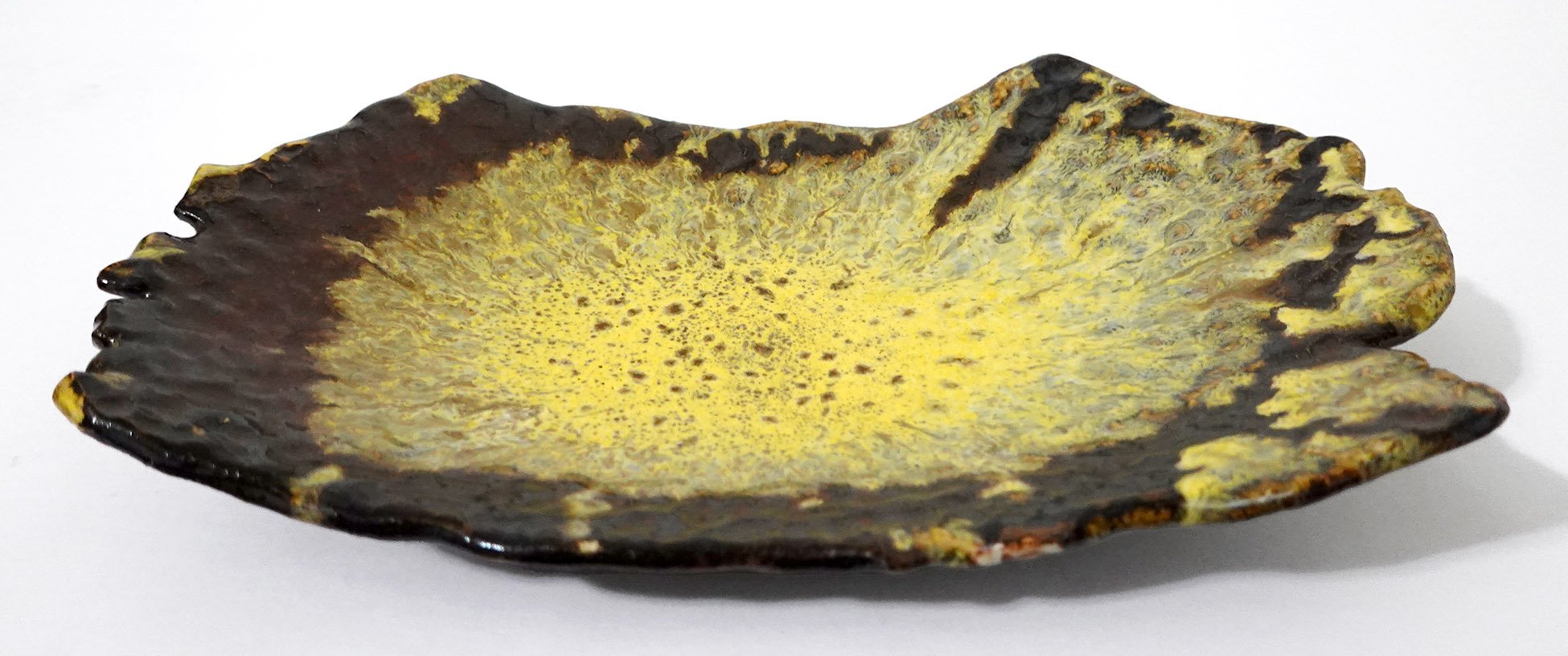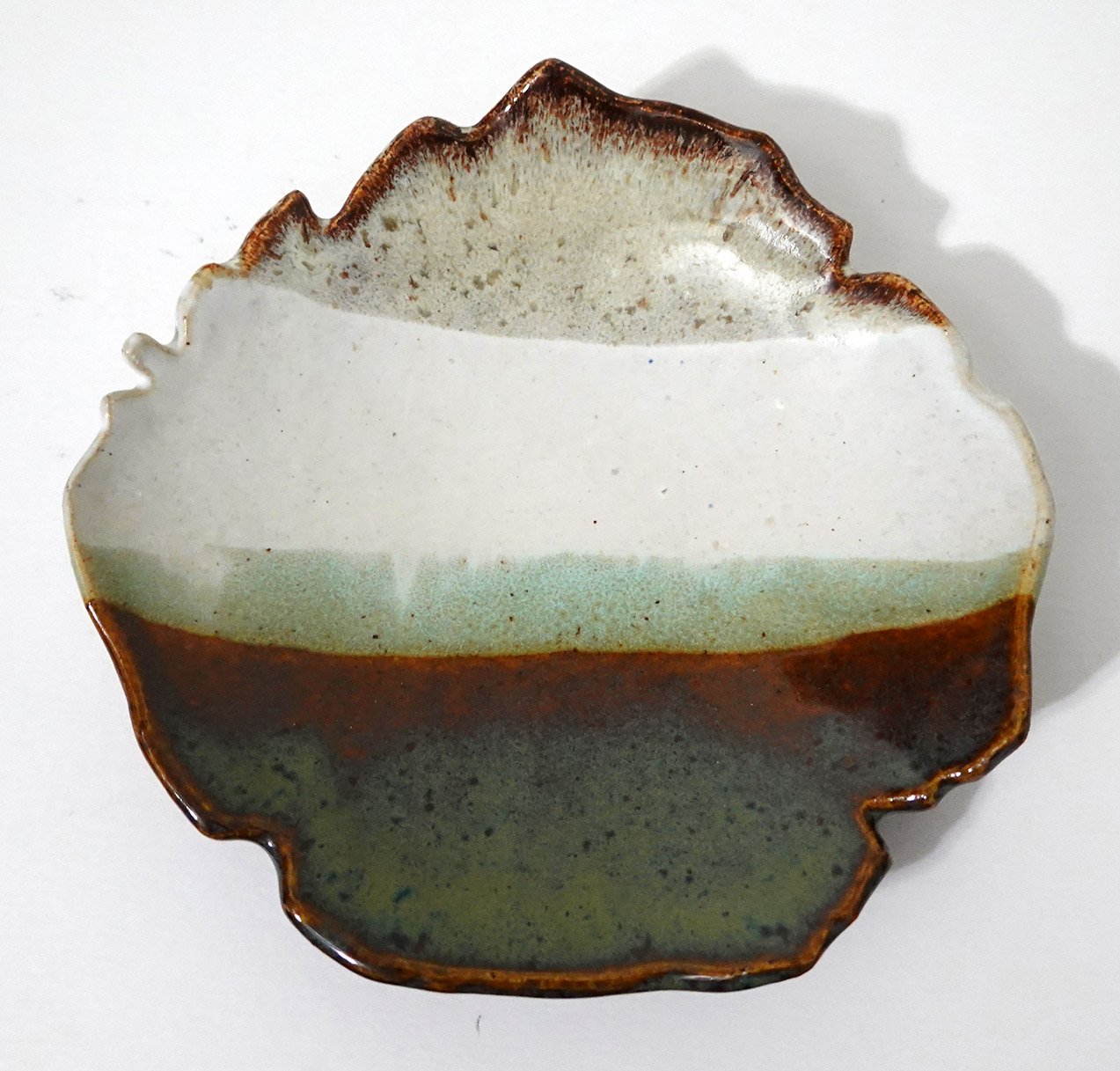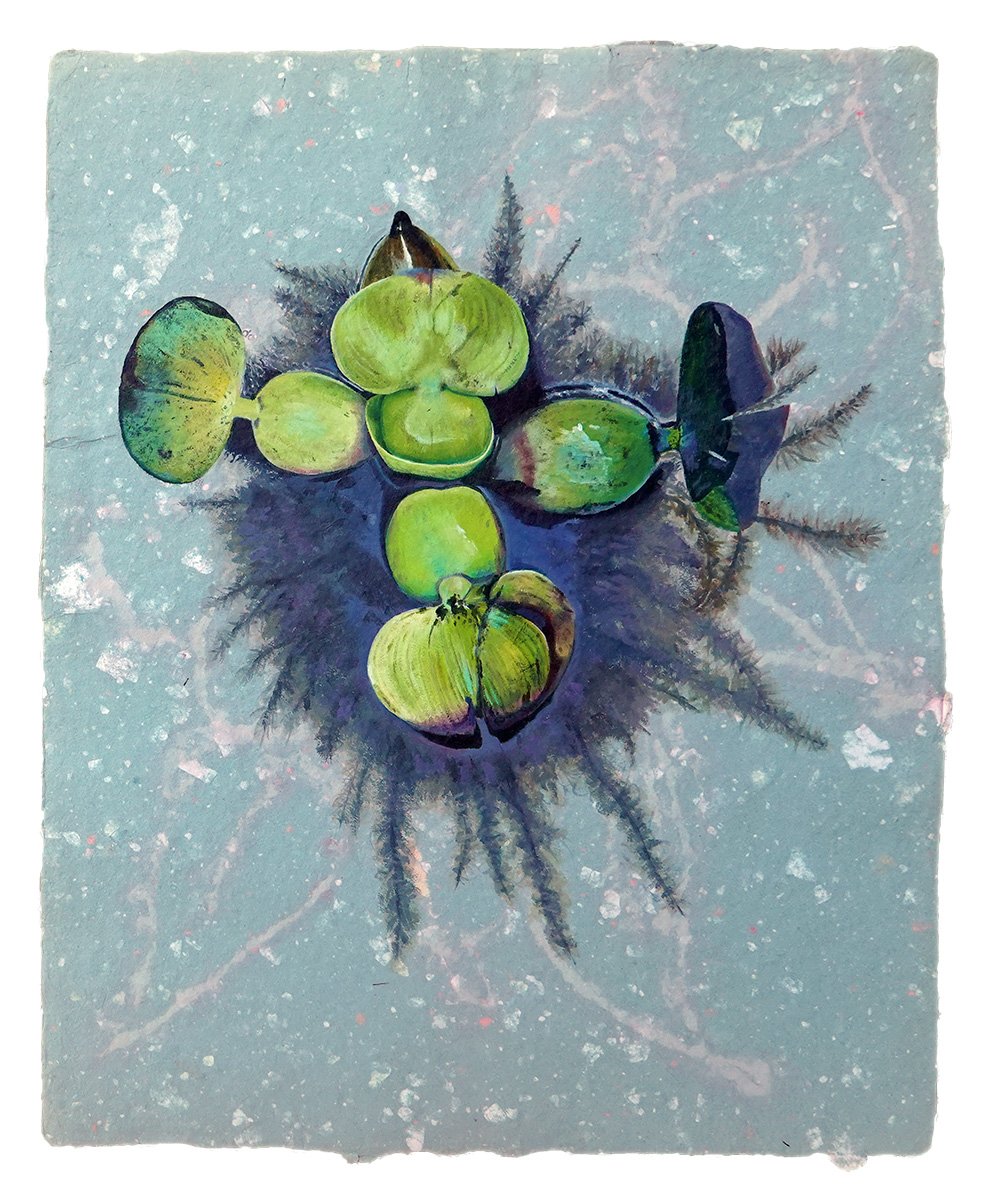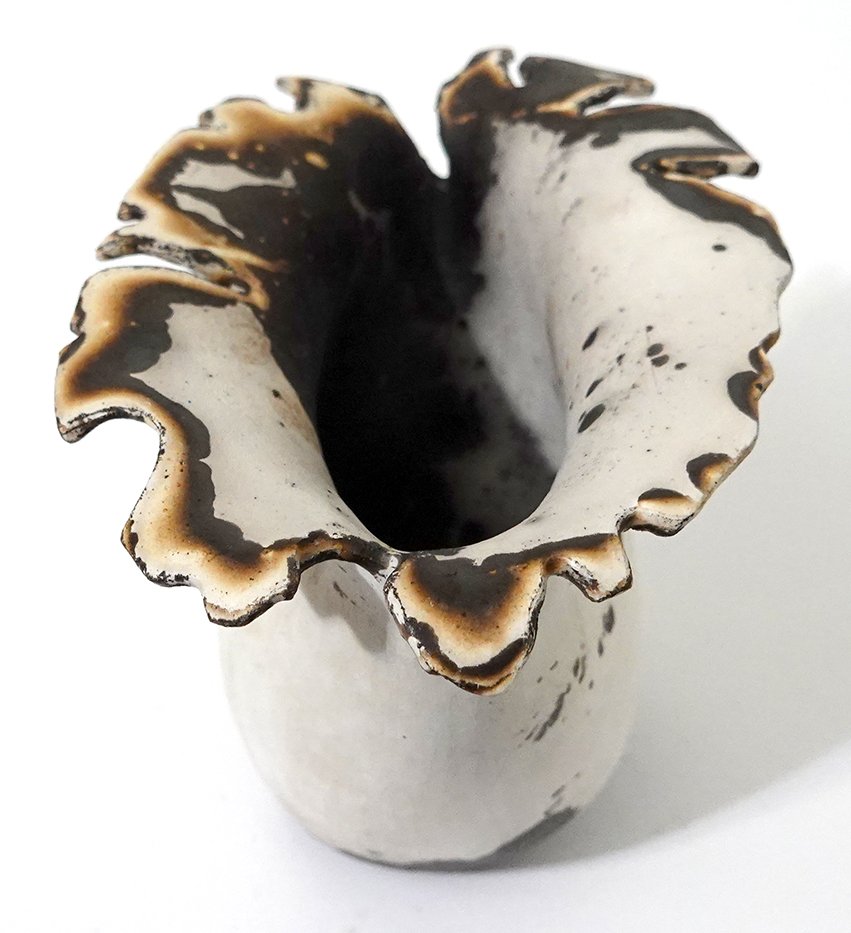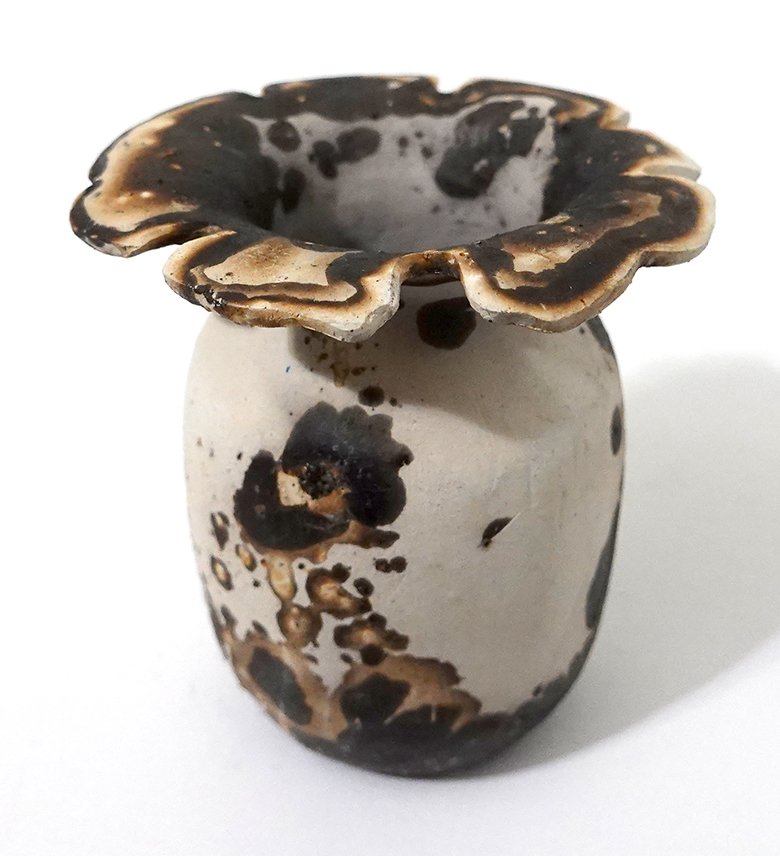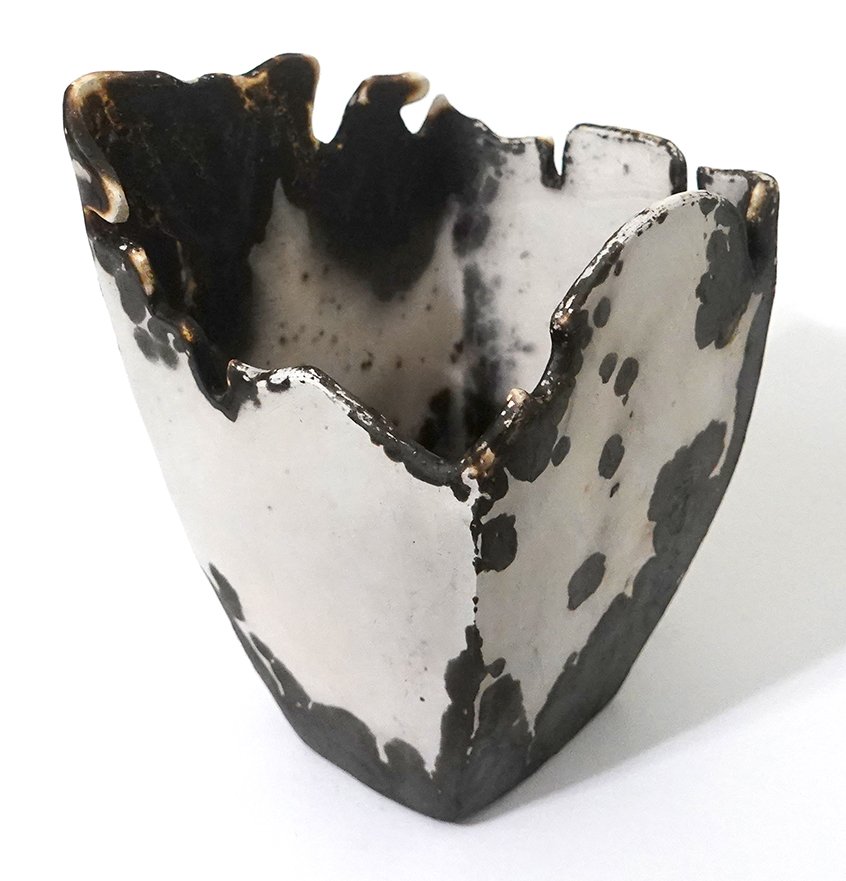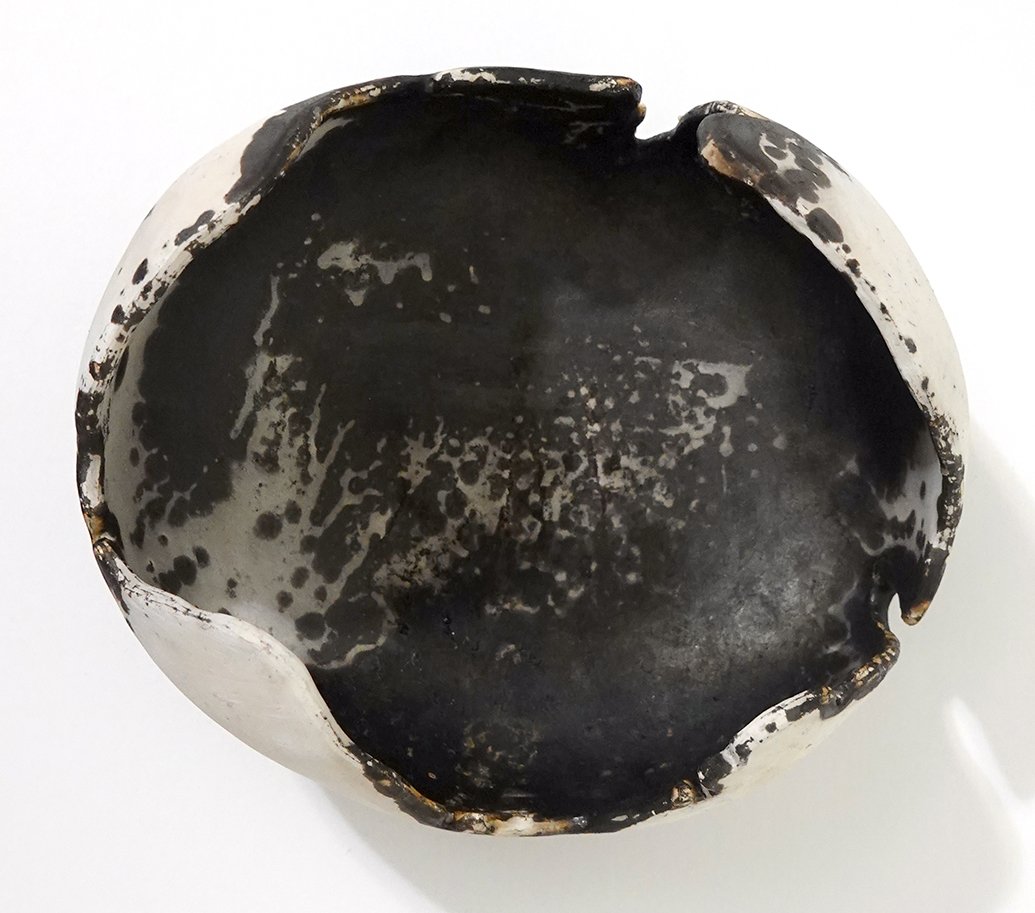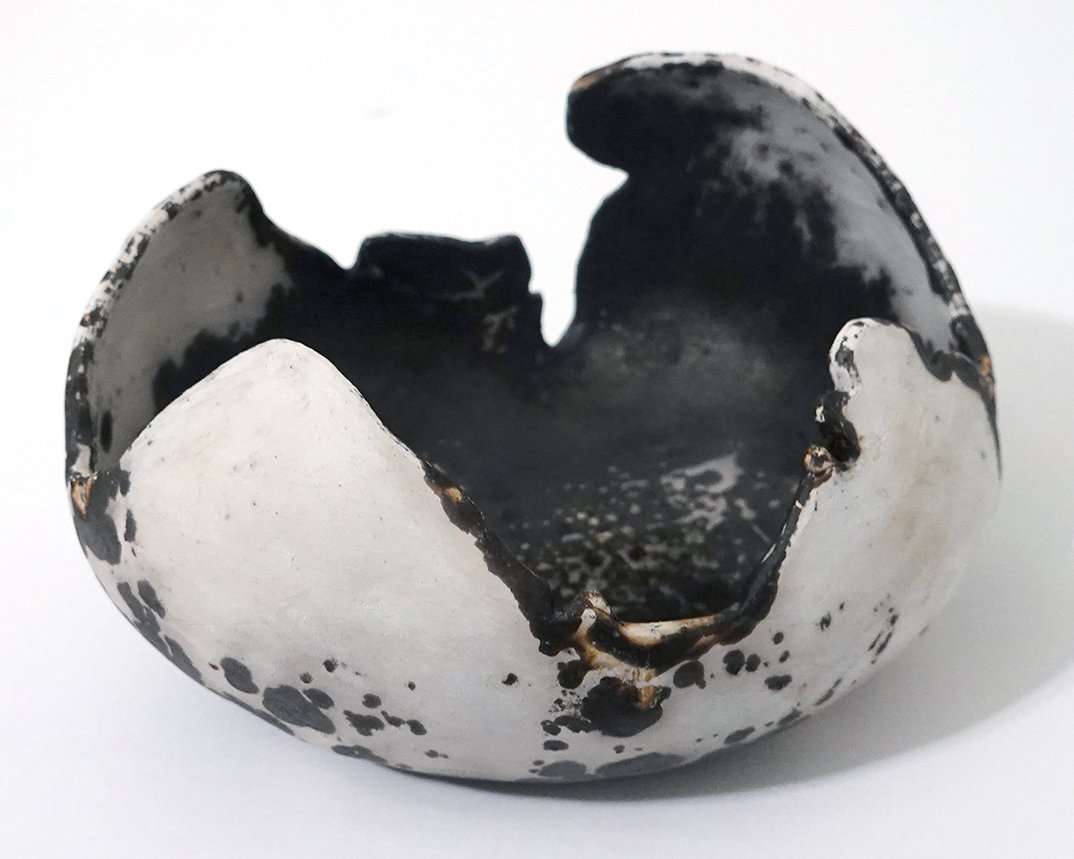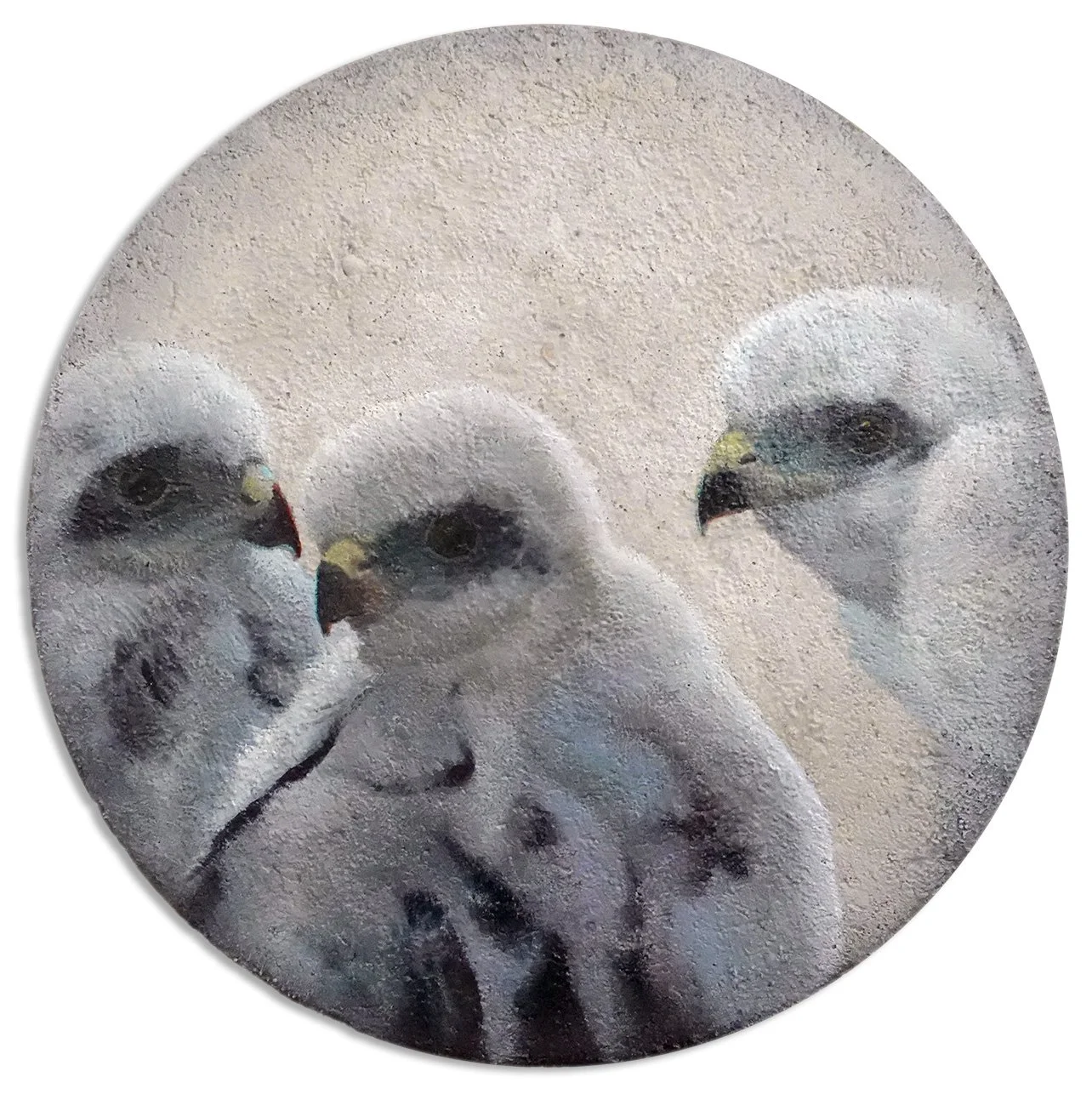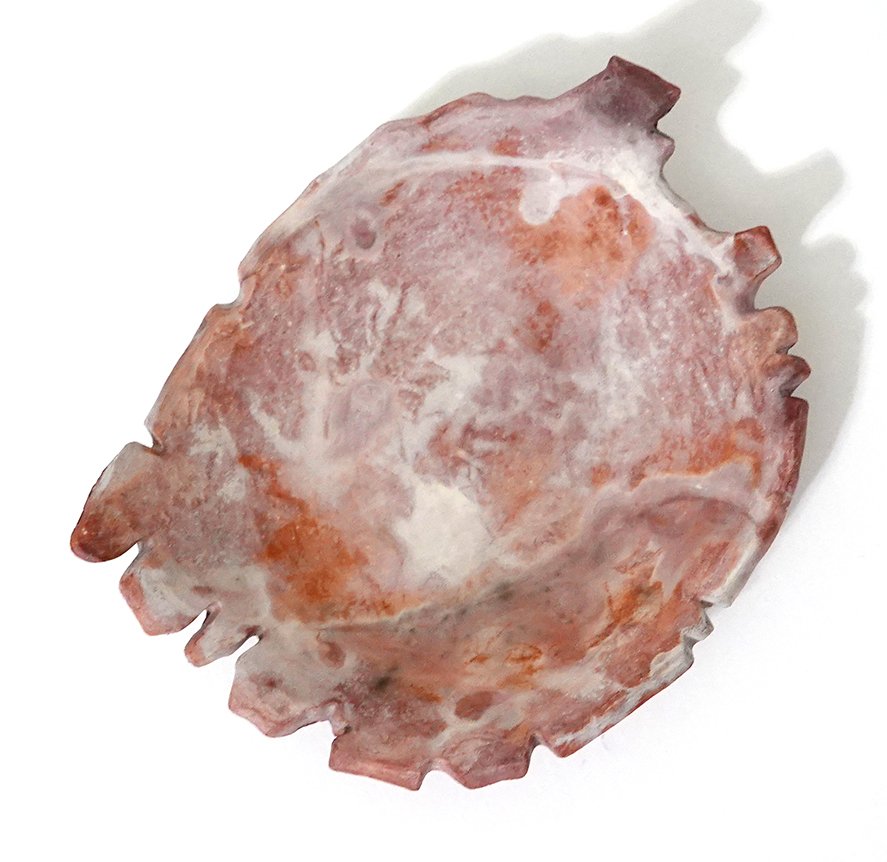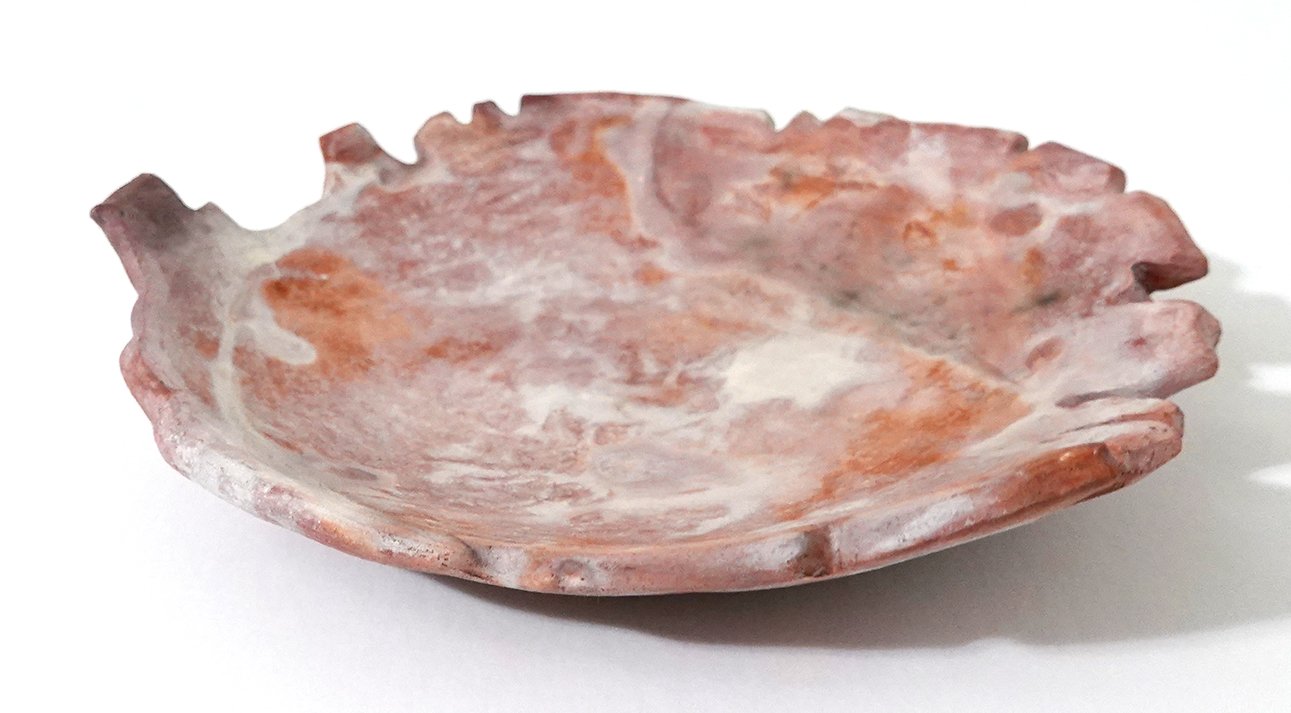Drawing my sunbathing hoopoe on top of the olive wood was really difficult. Not in terms of making marks - that was fine! - but in terms of accurately putting a competing design on top of the loud wood grain already present. Even the placement and size itself was difficult to determine! Then once I began, sometimes the drawing perfectly aligned with the wood grain, which itself was startling and caused me to second-guess my work, but other times I had to dismiss what the wood grain was doing and superimpose a different line.
The painting was also tedious, in that the smaller-than-desired size of the slab meant the artwork too was a bit smaller than I wanted and I had to use my three smallest brushes to paint the whole piece. I also needed to layer the paint and build it up, as the high-contrast wood grain design bled through my first few layers of paint (particularly the white areas). I’d guess the white areas have at least six applications of white paint to achieve my desired opacity.
After I added the sun, it looked too anemic; a simple gold circle in the olive wood sky blended in too much. I slept on it, and the next day I decided to add a darker gradient halo to the sun. This detail was instrumental; I am really pleased with how much it enhanced the artwork.
I managed to finish this piece just before my show reception, so I snuck it into the show by placing it on a small stand on the gallery display counter. A number of viewers remarked at how natural and easy the piece looks in that it all flows and sits exactly where it should. Given how difficult it was to execute, that was rewarding to hear.
The field biologist who had taken me on a couple Mount Lycabettus hikes and knew I was painting hoopoes arrived and brought with him some sparrowhawk and hoopoe feathers he’d found. One of the wing feathers he brought perfectly aligns with my painting, which is really cool. I toyed with the idea of incorporating it into the painting, but decided not to do so (yet, anyway!).
This is Radiance, acrylic on natural olive wood slab, 7.5x16.5x.75", 2023.



